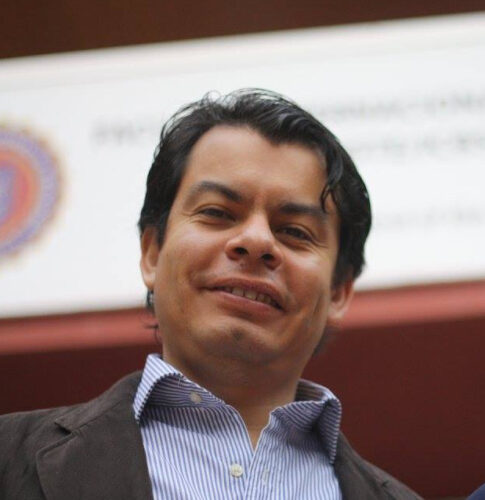The professional services of clinical research organizations (CROs) usually involve very large amounts of money.
In the United States, for example, for a phase 1 clinical trial in oncology including 15 to 20 patients, a CRO can budget more than a million dollars for the staff services alone, if a full service (start-up, monitoring, data management, statistical programming, etc.) is required.
In this article you will learn about:
For larger clinical trials —phase 2 or 3— involving hundreds of patients and multiple countries, a CRO can budget from $2 million to $15 million, or even several millions more.
Obviously, the commercial clinical research sector manages millions of dollars, and it is impossible for biotech companies —which develop new drugs— to conduct these types of studies without investors to provide the necessary funding.
Clinical Trials with Less Funding
However, there is a type of clinical research that does not have such high funding to carry out certain clinical trials.
A clear and common case is that of non-profit academic clinical trials, which are financed and managed by non-commercial sponsors.
Many times, the design of these academic studies stems from the mind of a doctor and, in these cases, they are known as investigator-initiated trials (IITs).
IITs are not focused on seeking commercial profit through the sale of the drug under development, but rather on scientific advancement and providing new therapeutic options for patients.
It is quite frequent that these clinical trials have only limited financial support from a government research program —sometimes public funds— so that the study sponsor has only a modest sum of money to conduct the research.
At other times, investigator-initiated clinical trials do have some funding from a biotech or pharmaceutical company, but these funds are limited, far below the budget that would be available for a commercial study led by an industry sponsor.
It may even be the case that the sponsor of a clinical trial is a biotech company for commercial purposes, but at a certain point it needs to conduct a trial with a lower budget.
In any case, the reality is that on many occasions it is necessary to carry out a clinical trial with less money, and this can sometimes represent a challenge, since the level of quality required by international good clinical practice regulations and the standards established by regulatory agencies are still required.
The Need for a Low-Cost CRO
CROs are companies specialized in giving the necessary support for the conduct of a clinical trial, including the set-up, monitoring and data management of the research, among many other tasks.
In the context of non-commercial research —where sponsors do not have a lot of funding— it is not easy to find CROs that have cheaper rates that allow the study to be performed on a lower budget.
After all, a CRO is a business, and if a company makes huge profits servicing multinational pharmaceutical companies, why should it lower its profits by working with lower budgets?
Therefore, the key here is to find a CRO that can adapt to lower budgets, while maintaining adequate quality standards.
There are high quality CROs on the market that support clinical trials at more affordable prices.
Here are some ways in which a CRO can offer more competitive pricing.
How Can a CRO Offer Lower Prices?
There are CROs that, due to their characteristics and ways of operating, can manage clinical trials at lower rates.
How do they do it?
- Smaller size: Lower infrastructure costs
While there are CROs with several thousand employees, there are also smaller CROs, which can have between 30 and 100 employees.
Smaller CROs have lower internal staffing and infrastructure costs, which allows them to offer more competitive prices to their customers and still maintain profit margins that are appropriate for their size.
For instance, if a multinational CRO charges $180 per hour for a Clinical Project Manager, a small CRO might be able to charge closer to $110 per hour.
This means that a small CRO can offer staffing rates 30 to 40% cheaper, depending on the study and the profile of the resource needed.
- Staff located in countries with cheaper costs
The cost of living and salaries of employees vary from country to country.
As an example, the salary of a Clinical Research Associate (CRA) in the United States is not the same as that of a CRA located in some European countries (the latter are lower).
For this reason, CROs that have professionals located in different countries can offer lower personnel rates to their clients for some roles.
Even if a clinical trial is run in a country such as the US, part of the CRO’s team may service the study remotely from other countries (e.g., a Data Manager).
Hence, the availability of staff in different areas can allow a CRO to offer a tighter budget.
- Countries where the clinical trial is conducted
Another means of reducing costs in a clinical trial is to carry it out in a country or countries where costs are lower.
Conducting a clinical trial in certain countries can bring substantial savings for a sponsor.
To give an example, there is no doubt that the United States is a leading country in the execution of clinical trials, however, the costs of running a clinical trial in this territory are very high (among the most expensive in the world).
Thus, if a sponsor is not required to conduct the trial in the US, the CRO can save a lot of money by proposing another country with more competitive prices.
By way of illustration, the price required by a hospital in the US to cover the cost of medical tests and procedures for a patient in an oncology trial can range from $20,000 to $50,000 per patient treated (which is substantial).
In contrast, for the same clinical trial protocol, a hospital located in Spain might ask between $8,000 and $15,000 per patient.
These cost savings are also a reality in terms of the opening prices of a clinical trial.
If a clinical center asks for about $8,000 to activate a trial in the United States, it is likely that the same study can be opened for less than half that in certain European countries.
If we consider a clinical trial with hundreds of patients and dozens of centers, we can quickly understand that the selected countries have a remarkable impact on the overall budget.
- Technological tools
Another source of great savings that a CRO can propose is to choose cheaper technological tools (while maintaining adequate quality).
An example of this can be the electronic data capture (EDC) system, which is the software used to collect, clean, and process clinical trial data.
A clinical trial can be conducted using a high-profile EDC platform, which can cost around $5,000 per month.
If the study lasts three years, we would be talking about $180,000 just in licenses and hosting for this software (which is not the only software used in a trial).
Despite this, there are cheaper EDC solutions that ensure optimal quality of clinical data.
High-quality EDC systems can be found on the market for about $2,000 per month or less (which would be a savings of up to 60%).
In short, a clinical trial can be conducted with cost-effective software tools while ensuring the highest standards.
These software savings contribute to a significant reduction in the overall study invoice.
Does a Cheaper CRO Mean Less Quality Service?
This is the short answer to the above question: Sometimes it may, but not necessarily.
The quality of the execution and data of a clinical trial is a critical aspect that sponsors should consider very carefully.
We might suspect that using a cheaper CRO translates into a lower quality clinical trial.
Well, it is true that running a clinical trial requires professional service and many resources that are essential to ensure the excellence of a study (and this costs money).
If the available funding is too low, there is a risk of not being able to contract the minimum resources required.
And it is also true that a CRO can promise an outstanding study at a low price, and then fail to deliver on its promise.
However, let us not forget, there is not always a direct relationship between the price of a clinical trial and its quality.
There are plenty of examples of clinical studies —budgeted by multinational CROs— that cost a lot of money but fail in one way or another.
Money does not guarantee the absence of delays, unwanted events, nor does it ensure a highly committed CRO team that strives to solve problems and serve the sponsor’s needs in the best possible way.
There are more than a few cases in which a biotech firm pays very high invoices to renowned international CROs, only to experience frustration and dissatisfaction.
Of course, there is also the possibility of being frustrated and dissatisfied with a cheaper CRO.
Be that as it may, it is not a utopia to find a CRO that provides all that is desirable: commitment, quality, and a good price.
Sofpromed: An Affordable CRO for Low-Budget Clinical Trials
Sofpromed is a small CRO —in the range of 50-75 employees— with the capacity to manage clinical trials in the US, UK, Europe, and the Asia-Pacific region.
Our size allows us to offer very competitive rates to our clients, always maintaining good quality standards.
We have staff located in different regions and we advise sponsors to select the most strategic countries if there is a need to reduce costs.
Considering our extensive experience in conducting academic clinical studies and investigator-initiated trials, we are accustomed to providing cost-effective, quality-assured software tools (EDC systems, eTMF, etc.).
Some of our distinctive features are our speed to respond to our clients’ requests and our commitment to ensure study success, even when adverse situations arise.
Conclusion
Although CROs are often associated with multi-million dollar budgets, it is possible to find CROs that offer good service at lower prices.
Sponsors with limited budgets need CROs that fit their financial means without threatening the quality of the clinical trial.
There are CROs that fit into smaller budgets owing to their size and because they use personnel, countries, hospitals, and software tools that guarantee optimal performance at a lower price.
Sofpromed is a good example of this for clinical trials to be carried out in the United States, the United Kingdom, Europe, and the Asia-Pacific region.









